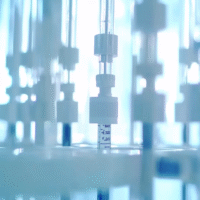Purpose of the Study
This study looked at two different treatments to help people with temporomandibular disorders (TMDs), which cause pain and issues in the jaw. The two treatments compared were:
- Pharmacotherapy: Using medication (specifically a capsule combining Acetaminophen, Caffeine, and Ibuprofen).
- Photobiomodulation Therapy: A treatment using light to reduce pain and improve jaw function.
Main Findings
Both groups had some improvements, but the patients who received photobiomodulation therapy experienced:
- Less pain
- Better ability to open their mouth
- Fewer signs of joint issues like clicking noises and tenderness
The results indicate that photobiomodulation therapy was more effective than the medication treatment.
What This Means for Patients and Clinics
This study suggests that patients with TMDs may find more relief from pain and better jaw function with light therapy rather than medication. Clinics should consider offering photobiomodulation therapy as a treatment option for TMDs.
Opportunities for Hospitals and Doctors
- Introduce photobiomodulation therapy in their pain management programs.
- Educate staff and patients about the benefits of this therapy.
- Monitor and track the results of this therapy on TMD patients.
Measurable Outcomes to Track
Clinics should monitor the following after using these findings:
- Patient pain levels
- Maximum mouth opening distance
- Incidence of jaw clicking and tenderness
AI Tools for Implementation
Clinics can consider using AI solutions for:
- Patient management systems to track treatment outcomes.
- Analysis tools to evaluate patient response to therapies.
Step-by-Step Plan for Clinics
- Start by learning about photobiomodulation therapy.
- Consider a small pilot program to treat a few TMD patients with this therapy.
- Collect data on patient outcomes.
- Evaluate the effectiveness and adjust the treatment plan as needed.
- Gradually expand the use of this therapy based on results and feedback.
For more details on the research, visit this link.


























